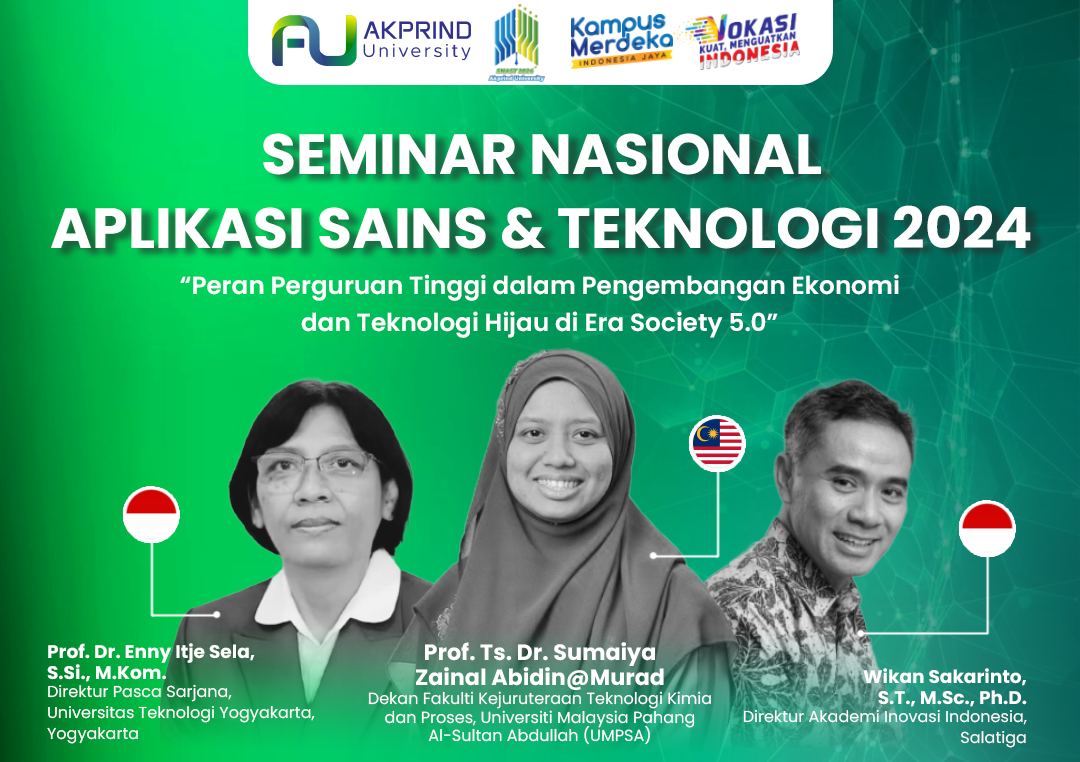ANALISIS PALEOEKOLOGI BERDASARKAN FOSIL FORAMINIFERA BENTONIK PADA FORMASI KEREK DI DAERAH WONOSEGORO, DAN SEKITARNYA, KECAMATAN WONOSEGORO, KABUPATEN BOYOLALI, PROVINSI JAWA TENGAH
DOI:
https://doi.org/10.34151/prosidingsnast.v1i1.3381Keywords:
Benthonic, paleobatimetry, Paleosalinity , PaleotemperatureAbstract
The Kerek Formation at the research site is generally composed of two rock units, interbedded carbonate sandstone and carbonate mudstone Kerek (a) and interbedded carbonate sandstone and carbonate siltstone (b) indicating that the location of the deposition is a marine environment, so it is an ideal location for paleoecological analysis. Benthonic foraminifera is a type of foraminifera that lives by mooring itself using vagile or sesile and lives on the seabed at a certain depth. Paleoecology is an ancient ecological constance or a description of ecological conditions (sedimentary environment, salinity and temperature) in the past. The location of data collection was carried out at five points (Observation Locations) located in the Wonosegoro. The research site consists, interbedded carbonate sandstone and carbonate mudstone Kerek (LP 32, LP 52, LP 71) and interbedded carbonate sandstone and carbonate siltstone (LP 15 and LP 143) which represent the top-middle and battom areas of the two rock units that make up the Kerek Formation. In the paleobatimetry analysis, it was obtained that at the five points of the research location there was a bathymetric zone in the form of an inner bathyal (Tipsword, et al. 1966). Paleosalinity based on classification according to Boltovskoy (1991) and Murray (1989; 1991) is in a salinity condition that changes five times, starting from high salinity / hypersaline (>40%) and ending with medium salinity (32-40%). Meanwhile, the paleotemperature condition based on the temperature characteristic genus according to Ujetz (1996), there are 6 temperature changes with the initial phase of medium temperature (10 – 20 C), in the middle phase there is a change to cold (<10) and closed with the final phase of medium temperature.
References
Adistia, L. (2022). Perkembangan Fasies Pengendapan Formasi Telisa Berdasarkan Foraminifera Planktonik dan Bentonik Daerah Tebing dan sekitarnya, Kecamatan Kampar Hulu, Kabupaten Kampar, Provinsi Riau . Pekanbaru: Prido Teknik Geologi, Fakultas Teknik, Universitas ISlam Riau.
Blow, W. H. (1969). The Cenozoic Foraminifera, . Leiden: v. I & 11.E. J. Brill.
Dian Novita, D. R. ( Agustus 2022 ). Pola Perubahan Iklimpurba pada Umur Pliosen dengan Proksi Foraminifera: Studi Kasus Formasi Sentolo, Paleoclimate Change Pattern in Pliocene with Foraminifera Proxies:
Case Studi Sentolo Formation,. Jurnal Geologi dan Sumberdaya Mineral Vol. 23 No. 3, hal. 133-140.
Hanifah, R. I., Jurnaliah, L., & Winantris. (Desember 2022). Paleosalinitas Berdasarkan Kelimpahan Foraminifera Bentonik Kecil pada Core JPA 07 - 04 di Perairan Jepara, Jawa Tengah. Bulletin of Scientific Contribution: GEOLOGY, Volume 20, Nomor 3, , 121-126.
Ishendriati, R., Jurnaliah, L., & Winantris. (Agustus, 2021). Paleotemperatur dan Paleoksiogen Formasi Jatilugur
Berdasarkan Analisis Kumpulan Fosil Foraminifera Bentonik Kecil pada Kecamatan Jatiluhur dan
Sekitarnya, Kabupaten Purwakarta, Jawa Barat. PADJAJARAN GEOSCIENCE JOURNAL Vol 5, No.4, 416 - 423.
Isni Nurruhwati, R. K. (September 2012). Kelompokforaminifera Bentik Resen Berdasarkan Komposisi Dinding Cangkang Di Perairanteluk Jakarta. Jurnal Akuatika Vol. III No. 2, 190-197.
Leoblich, Leobich, & Tappan. (1964). Morfologi Cangkang Foraminufera. Texas: UAS University.
Phipps, M., Jorissen, F., Pusceddu, A., Bianchelli, S., & Stigter, H. (2012). Live Bnethic Foraminiferal Faunas Along a Bathymetrical Transect (282 - 4982 M) on the Portuguese Margin (ne Atlantic). Journal of Foraminiferal Research Vol 42 No .1, 66 - 81.
Postuma, J. A. (1971). Manual of Planktonic Foraminifera, Royal Dutch/Shell Group. The Hague: The Netherlands.
Putri, B. E., Jurnaliah, L., & Fauzielly, L. (Desember 2020). Paleosalinitas dan Paleotemperatur Kala Miosen Akhir - Pliosen Berdasarkan Foraminifera Bentonik Kecil pada Lintasan Kali Dolog, Jawa Tengah. Padjajaran Geoscience Journal, Vol. 4, No. 6, 504 - 510.
Tania, D. (2019). Perkembangan Lingkungan Pengendapan Dari Formasi Sambipitu Ke Formasi Wonosari Daerah Jelok, Desa Beji,Kecamatan Patok, Kabupaten Gunungkidul, Daerah Istimewa Yogyakarta. Jurnal Teknologi Technoscientia, Vol. 11 No. 2, p.193 - 201.
Tania D., (2021), Variasi Komposisi Dinding Cangkang Fosil Foraminifera Bentonik untuk Penentuan Lingkungan Pengendapan Daerah Sungai Oyo, Desa Beji, Kecamatan Patuk, Kabupaten Gunungkidul, Daerah Istimewa Yogyakarta, Jurnal Teknologi Technoscientia, Vol. 13, No. 2, Februari 2021.p.102-112.
Tipsword, H. L., Setzer, F, M., , & Smith F, L, Jr. (1966). Interpretation of depositional environment in Gulf Coast petroleum exploration from paleoecology and related stratigraphy. Amerika.: Transaction G. C. Assoc. Geol. Soc.
Ujetz, B. (1996). Micropaleontology of paleogene deep water sediments. Haute-Savoie, France : Doctoral dissertation, University of Geneva.
Valchev, B. (2003). On the potential of small benthic foraminifera as paleoecological indicators recent advances. Ann : UMG.
Zulhikmah. (2019). Karakteristik Sedimen, Kandungan Foraminifera dan Unsur Geokimia pada Sedimen Kuarter Laut Dalam di Perairan Sumba Nusa Tenggara Timur. Tugas AKhir, Jurusan Teknik Geologi, Fakultas Teknik, Universitas Islam Riau.
Downloads
Published
Issue
Section
License
Copyright (c) 2024 Dina Tania

This work is licensed under a Creative Commons Attribution-ShareAlike 4.0 International License.







